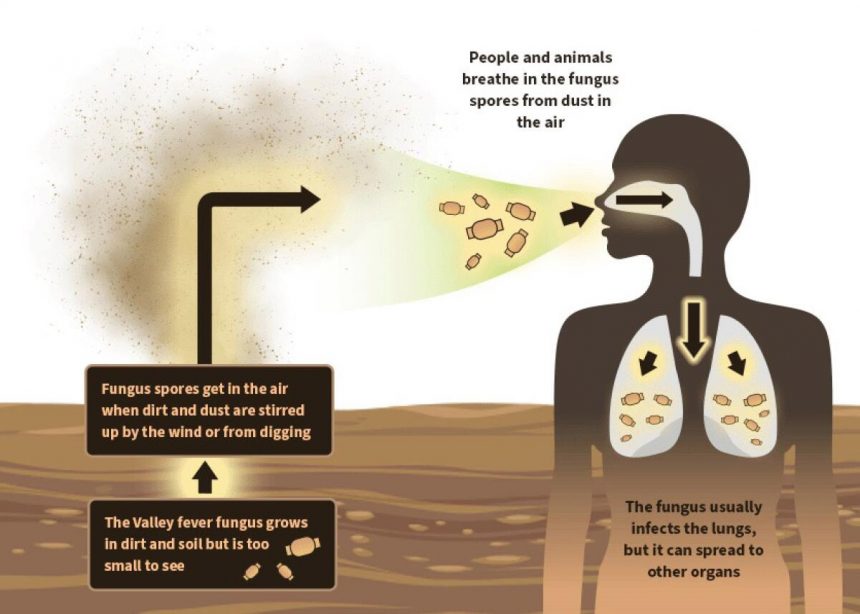
Valley Fever diagram, via the LA Times
Valley fever is an emerging fungal disease in the western United States known to cause flu-like symptoms and potentially serious complications. Recent research conducted by the University of California San Diego and University of California, Berkeley, has revealed seasonal patterns in reported cases of Valley fever in California, which could aid in better preparation for future outbreaks.
The study, published in The Lancet Regional Health – Americas, highlights how climate change may impact the spread of infectious diseases like Valley fever. By analyzing data in California from 2000 to 2021, researchers found that drought periods influenced the seasonal cycles of the disease across different counties.
Despite most cases occurring between September and November, variations in patterns and timing were observed between counties and years. The study suggests that drought conditions may play a role in these differences, affecting the prevalence of Valley fever cases.
Valley fever, caused by the soil-dwelling Coccidioides fungus, is typically spread through inhalation of infectious spores. The disease has seen a significant increase in cases in recent years, posing challenges in diagnosis and treatment due to its resemblance to other respiratory infections.
Understanding the seasonal peaks of Valley fever can aid healthcare providers in identifying high-risk periods for new cases. The study also suggests a link between drought cycles and disease severity, as droughts may allow the fungus to thrive with less competition from other microbes.
The research underscores the importance of monitoring and prevention strategies against Valley fever, particularly during dry and dusty periods. As the team expands their analysis to other hotspot regions, such as Arizona, the aim is to provide valuable insights for public health officials and individuals at risk of contracting the disease.






